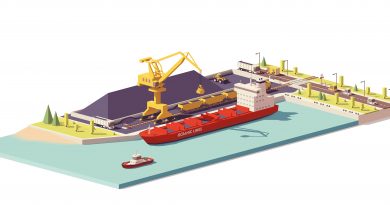New Ideas For Utility Policy (Idea No. 2)
In my last article, I looked at this question of “dig once” and how it might influence utility affordability and beget better infrastructure for everyone. One of the corollaries here is that whenever you have the chance to fix something, you may well also have the chance to develop fun, new technology alongside the infrastructure you’re fixing. In this case, let’s look at the question of district heating or cooling. This is a model that has been in use for many moons in institutional contexts in the United States- perhaps most famously college campuses- and in Europe, but not at any scale in most cities or residential districts.

How It Works
District heating has been around for awhile. District heating relies on a central plant burning a fuel source that supplies either hot water or steam heat to a specific area. In days of yore, Detroit had an extensive centralized steam heating system that was basically a trunkline that ran up Woodward from downtown. There are still a couple of steam plants operating for the few remaining clients of the system, but in an age where cheapo developers opt for low-efficiency Magic-Paks, PTACs, or, generally, not even complying with building code, steam system interconnection is somewhat of an elusive novelty with limited benefit.
District cooling works on the same principal of centralized heat exchanging and the economy of scale of cooling lots of something at higher efficiency in one location. Compared to a regular old air conditioner, though, district cooling cannot rely on refrigerant to distribute the “cold,” as it were. The refrigeration cycle relies on a repetitive expansion and compression of specific types of hydrocarbons. Unlike in a central air system, where the refrigerant expands through the lines into the air handler, this would all be done at the plant itself. Chilled water or glycol would be pumped out of the facility and toward its destinations. I say “water or glycol” because glycol is usually used in cold climates because it doesn’t freeze (it has to be -40F/C for it to freeze, but something buried under a city street isn’t likely to get much below 30-40°F).
Centralization: Economy of Scale? Looming Disaster? Lil Bit of Both?
Like it always says in the fine print, though, exclusions apply! Our house, for example, has a boiler that circulates steam heat. That boiler can’t circulate steam cold, no matter how you refit it. Nor would we be able to attach a glycol system to our mini-split condenser.
However, any dwelling unit with forced air could handle connection to district heating or cooling. A-coils, so named for their shape, are copper heat exchangers used for air conditioners in normal forced air systems. The air handler blows air over the coils, which transfers cold air throughout the distribution system. These cannot be used with chilled water or glycol systems, but the same air handler setup can be used; this would result in probably a minimum cost of a few thousand dollars to replace the unit and run the new line to the street. This is a similar cost question around why we don’t replace HCFC/CFC refrigerants, which have massive global warming potential, with ammonia. Ammonia corrodes copper and has to be transmitted through stainless steel, which is more expensive.
This brings us to another point about cost-benefit.
What’s The Minimum Threshold For Population Density?
I’m glad you asked. This is a common discussion in the United States, where cries from radical lefty urbanists to “build the trains” or “make things work better” are usually met with responses like, “we can’t do [x] because we’re not Europe!” It’s fair enough– we’re not Europe- but there are oodles of places in the United States where this would work. The general rule of thumb seems to be that you need around 10,000 people per square mile to make centralized heating or cooling make sense. These numbers are echoed by a number of major players in the game including the IEA, RMI, ASHRAE, and others, including the International District Energy Association.
Plants to produce district energy may not have a gigantic footprint, but they require a bit of infrastructure. Fossil fuel combustion is going to be the biggest hindrance to developing new central heating facilities, but it’s possible to imagine them with a much lower footprint than, say, a small power plant. After all, we’re all burning gas in our homes, and a lot of that leaks out of the distribution network between the time it gets to us and the time it leaves the pumping station. It could easily make sense to eliminate this leakage of gas while realizing the combustion efficiency of a large industrial system. Cost is certainly another question, but it makes sense to consider in the highest-density areas.
It’s anyone’s guess how well Dig Once might influence the cost-effectiveness of district heating and cooling, but the biggest cost is not going to be operating it– the biggest cost is going to be getting everything set up. If the underground lines are there, that takes a huge amount of cost out of the equation.



